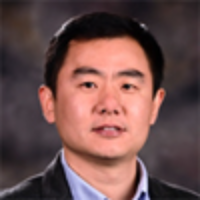Phytochemicals candidates as promising preventives and/or curatives for COVID-19 Infection: A brief review
Published on: 23rd March, 2021
OCLC Number/Unique Identifier: 9272357985
The outbreak of new coronavirus acute respiratory disease (SARS-CoV-2) has been a major global challenge for the scientific community to save humanity. While, the unviability of the vaccine keeps most classes of society, especially African countries, suffer from the healthcare problem. Conventional medicine plants become the alternative method for the therapeutic because it contains valuable bioactive compounds. This brief review devoted the importance of medicinal plants such as Citrus, olive, garlic, ginger, green tea, woad, broad-leaf privet, Japanese torreya, and saffron crocus, by their antiviral effects (anti-SARS coronavirus, anti-HSV, and anti-HIV diseases) and their promising uses as probable boosters of the immune and anti-inflammatory response from SARS-CoV-2 infection. Based on scientific reports, bioactive compounds could inhibit 3-chymotrypsin-like cysteine protease and human protein ACE2, where these facts can be attractive to develop effective drugs.
Effectiveness of an Ayurvedic Gel for Tooth Pain Relief Due to Dental Caries: A Randomized Controlled Trial
Published on: 19th June, 2024
Aim: To evaluate the effectiveness of an ayurvedic gel in tooth pain reduction due to dental caries. Materials and methods: This in vivo cross-over design study enrolled adults with at least one tooth with caries and a symptom of pain after the application of an ice stimulus. Two hundred patients were screened and eligible patients were enrolled in the study. Forty-five subjects completed washout phases before each recall visit. During each recall visit, subjects evaluated pain relief following an ice bar stimulus and one random finger-tip application of a treatment i.e. Ayurveda Herbal gel containing clove oil, camphor, and menthol (Ayurveda Herbal Gel Group), and two control formulations: a gel without active ingredients and commercial olive oil as a surrogate of home remedy. At each assessment, subjects used a stopwatch to record the onset of pain relief and tooth pain using visual analog scores (VAS), dental pain scores (DPS), and relief from tooth pain by dental pain relief scores (DPRS). After each treatment, subjects recorded their satisfaction with the provided treatment using a four-point satisfaction index. Data were tabulated and statistical analysis was performed with (ANCOVA) and two-way ANOVA with a p - value of 0.05 considered statistically significant. Results: Forty-five subjects (28 males and 17 females) completed the entire study without any adverse events. Application of the Ayurveda gel resulted in a significantly faster onset of pain relief (2.47 min) in comparison to the onset of pain relief after 4 minutes recorded with the controls (p < 0.05). Subjects reported lower VAS and DPS scores over the study period of evaluation when using the Ayurveda gel compared to the application of each control formulation. Subjects also reported greater relief of pain and greater satisfaction after the application of the Ayurveda gel as compared to the controls. Conclusion: Significantly better tooth pain relief from caries was observed from an Ayurveda Herbal gel than from controls.




